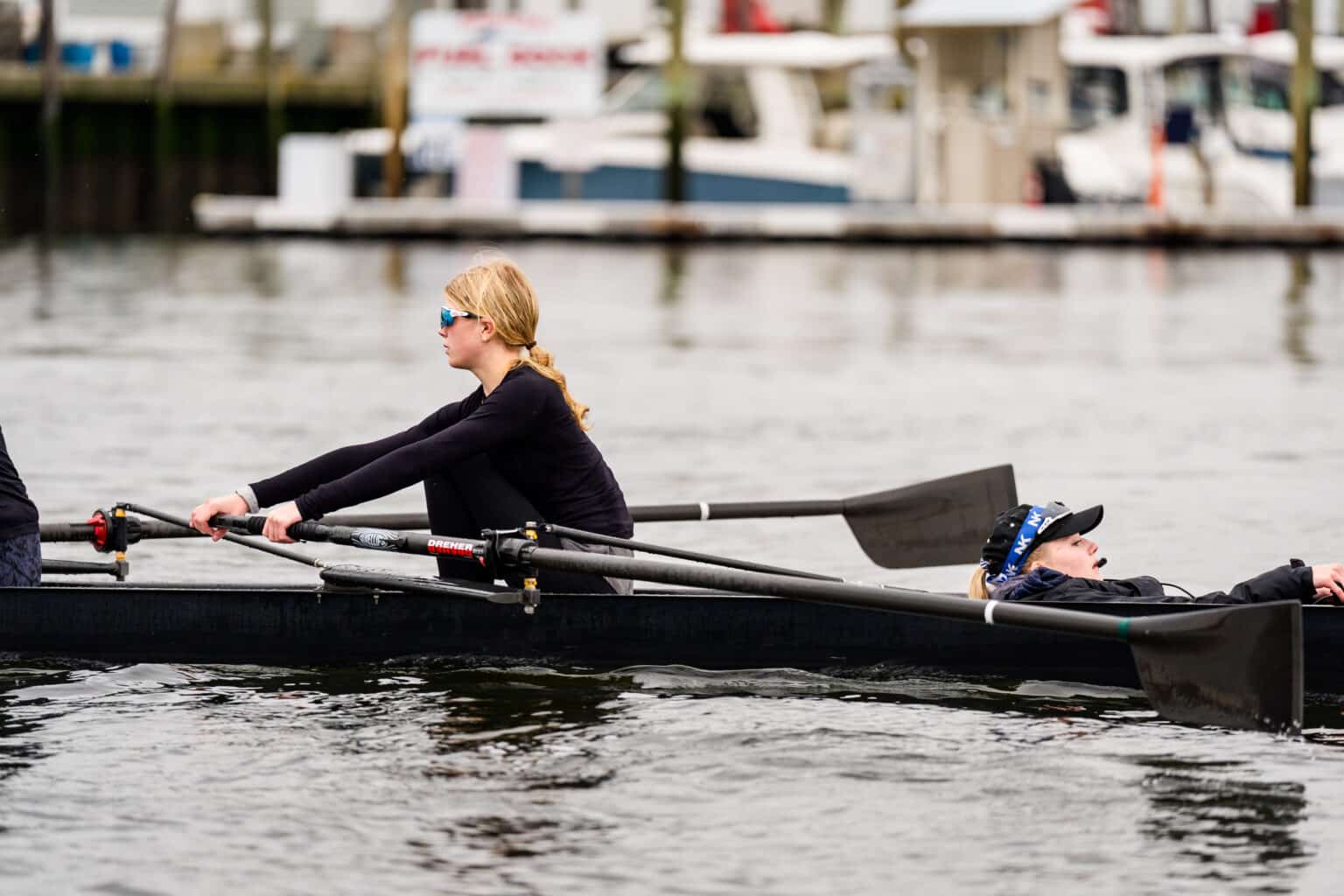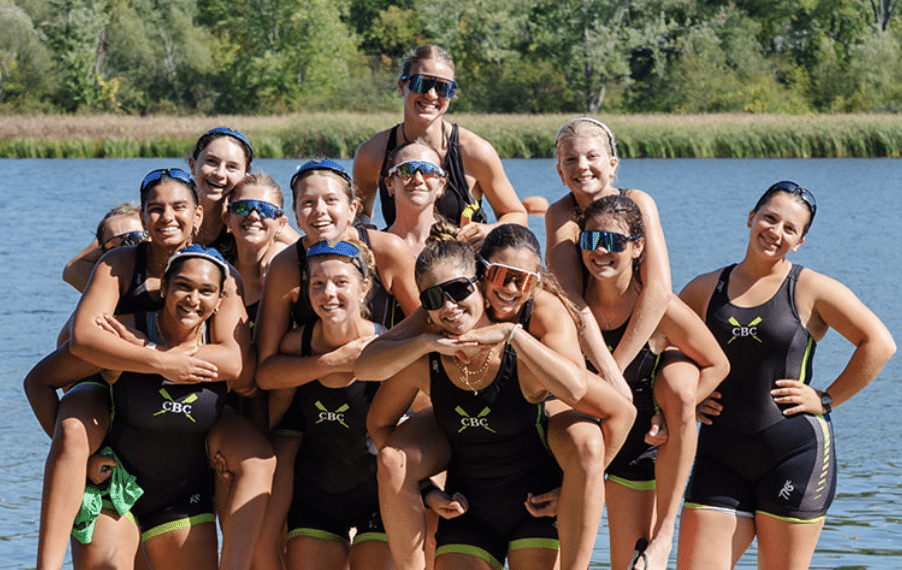Q: Do you need prior rowing experience to join a CBC racing team?
A: No. Athletes that are new will row on the Novice team or in the Development Program and learn the basics one step at a time.
Q: Do I have to row year-round?
A: Many rowers choose to participate year-round. While some varsity rowers have participated in another sport over the winter, most train and race with the team in the Fall, Winter and Spring.
Q: Is there a minimum age to row for CBC?
A: The majority of the rowers on CBC’s racing teams are in high school, with a few in 8th grade. The Development Team is made up of 7th and 8th graders.
Q: When are practices?
A: The Novice and Varsity racing teams generally practice from 4:00 – 6:15pm. The Development Program sessions run from 3:30-5:30pm. This includes time for the athletes to stretch and carry the boats and oars on and off the water.
Q: I heard that rowers are all tall. Is there a height requirement?
A: No! While it is true that height can be beneficial (in part because it enables a rower to have a longer stroke), the sport is full of successful rowers who would not otherwise be considered tall.
Q: What does the coxswain do?
A: On race day, the coxswain’s primary task is to steer the boat. She also guides the oarswomen in executing their race plan and keeps them apprised of where they are in relation to the other boats (because their eyes should be focussed on the rower in front of them!). During practice, she steers and executes the day’s practice for the coach. (Contrary to popular perception, she does NOT yell “Stroke! Stroke! Stroke!”)
Q: I hear that coxswains are all short. Is there a height requirement?
A: There is no height requirement, but there is a great advantage to having a light coxswain. For the Youth Nationals, the minimum weight is 110 lbs. Anything above that is extra weight for the boat to carry. (If a coxswain is lighter than 110 lbs, she must carry extra weight.)
Q: What is a regatta like?
A: Regattas generally last all day and, in the Spring, are often two or occasionally 3 days long. The athletes usually travel together in vans. The parents watch from an outdoor area where some prepare breakfast, lunches and snacks for the rowers and their parents/family members. It is definitely an “extended family” team effort! CBC volunteers often arrive the day before and set up the CBC tents and grills. CBC parents pride themselves on providing some of the most healthy and delicious food at the regatta.
Q: Do you row in the rain?
A: Yes. Rowing in inclement weather (within reason) builds character! Moreover, rainy weather often creates great rowing conditions because it makes for calmer water. It is imperative that our athletes dress for the weather. This includes waterproof shells and lycra gear. Layers is often the name of the game. Of course, we will not row when there are high winds or lightening. On those days our athletes make use of our rowing machines (or “ergs”).
Q: Do the boats tip over?
A: It is almost impossible for the eight-person and four-person boats (or “shells”) to tip over. In fact, we have never had it happen. However, the single and two-person boats can (and occasionally do) tip over. For this reason: (1) in order to row with CBC, you must be a competent swimmer able to tread water for at least seven minutes; (2) our coaches are in motor boats (or “launches”) within sight of the rowers at all times; and (3) beginners rarely practice in one and two-person shells.


